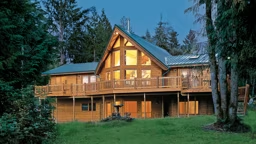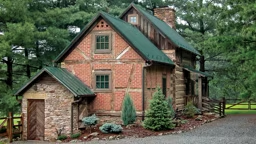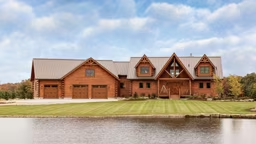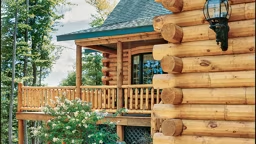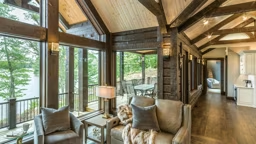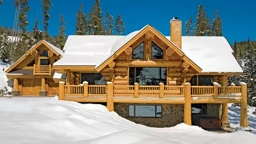By Jim Cooper
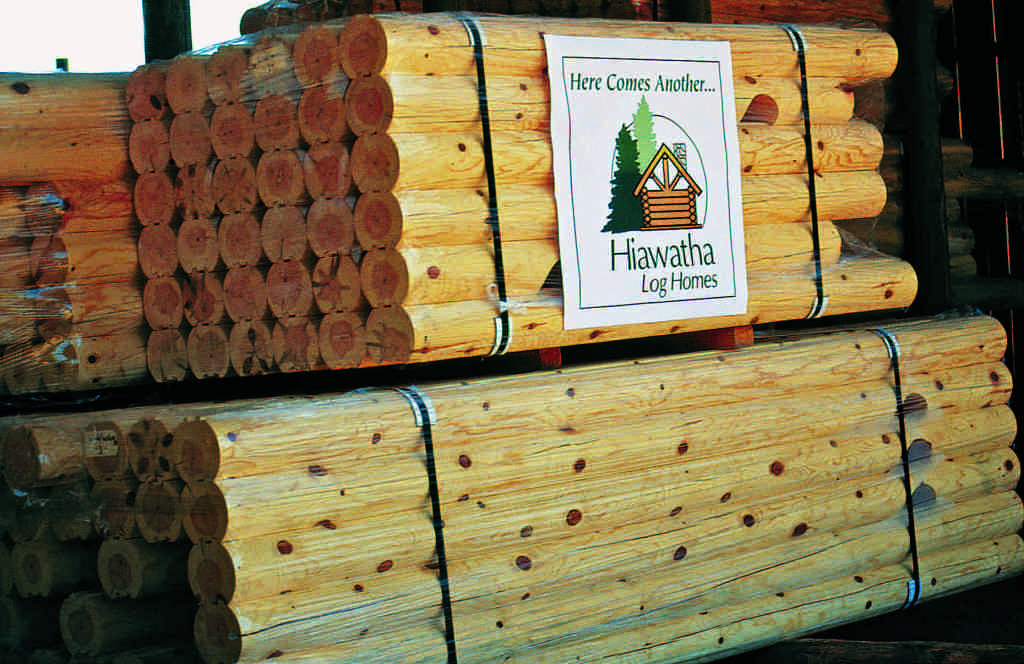 After pre-cut logs are milled, they’re arranged according to their intended location in the walls, then bundled, loaded on trucks and shipped to the building site, ready to erect.
After pre-cut logs are milled, they’re arranged according to their intended location in the walls, then bundled, loaded on trucks and shipped to the building site, ready to erect.
Perhaps the most frustrating challenge facing log-home shoppers is comparing prices quoted by different companies. It seems that no two kits are alike. Each manufacturer has its own idea about what should be included in a log home package. One’s standard item is the second’s option and a third may not carry the item at all.
Complicating the picture is the fact that log home manufacturers do not all use the same building system. What may be necessary to construct one manufacturer’s kit may not be required to complete another’s. Here, then, is a method for beating a path through the thicket of kit comparisons without getting scratched.
Most log home shoppers are not experienced builders, so they often lack the detailed knowledge necessary to evaluate the completeness of a kit. It’s easy to get lulled into a false sense of security by impressive diagrams or materials lists. If you’re not careful, you may overlook the one question necessary to obtain an accurate price comparison: “What will I need that’s not on this list?”
Only by filling in the missing blanks for each kit you are considering can you discover which package offers the best value.
Trust the System
The secret to a realistic comparison is a systematic approach. First, decide what actually needs comparing. If your objective is a turnkey house (one that will be completely built and finished by a professional builder), comparing kit prices may be largely irrelevant.
What the turnkey shopper needs to compare is the bottom-line finished house price. You can figure this by taking the kit prices with blueprints and material lists to the builders you are considering. They will provide a turnkey quote that includes all the work that you specify. All you need do is compare turnkey bids. If you are planning to erect your own log package or act as your own general contractor, price comparisons are more difficult.
First, make sure each quote has a detailed materials list attached. You must know exactly what you are purchasing. A good book on carpentry (not just log home building) is invaluable because it can illustrate and explain terminology in the lists that may be unfamiliar to you. Break the material list into sections.
Then call a local supplier to get an estimate on it. Place that cost figure into your quote comparison. You can omit items beyond the scope of any of the kits (plumbing or light fixtures, for example).
Because manufacturers do not organize their materials the same way, it may be easier to establish your own section headings, such as First-Floor System, Wall System, Second-Floor System, Roof System, Interior Framing System, Dormers, Porches and Breezeways, Decks, Garages. Beneath each section, list the items necessary to complete that system.
Under First-Floor System, for instance, list support posts, girder beam, sill sealer insulation, treated sill lumber, band lumber (to surround the subfloor), floor joists or beams, joist hangers (necessary in certain situations), subflooring and finished floor covering (wood, carpet, vinyl, etc.). Don’t forget to list glue, caulk, nails, screws and other fasteners; all are necessary parts of the building system, too.
Crunch Real Numbers
Try to deal only in hard numbers. When you have to make an assumption about something, write it down and verify it. If you are comparing a kit that includes a subfloor system with one that doesn’t, take your blueprints or a floor plan to your local lumberyard and ask how much a subfloor system costs that meets local building codes. Add this figure to the price of the kit that lacks a subfloor (don’t forget the cost of delivery).
One kit may have a top-of-the-line window, for example, while another includes an inexpensive unit. One company may base its quote on an 8-inch-thick log against a competitor’s 6-inch log. Labor costs to erect the package are another area for detailed comparison. If you are having your kit erected, get firm estimates from builders who can do the work.
But beware! Should a builder neglect to include something significant (such as a subfloor) in your estimate, don’t expect him to eat that cost, even if it is his error.
The moral is: Have confidence in any builder before you turn over such a task, but be sure to keep a close watch and ask questions.
Delivery Charges
Don’t assume that dimensional lumber and items such as shingles purchased locally are more economical because of savings in freight costs. Most log packages are shipped by the truckload. It doesn’t cost any more to ship a truck that contains a half-load of logs and a half-load of other building materials than it does to ship that half-load of logs by itself.
Because the buying power of the log company is generally better than an individual’s buying power (log companies often deal directly with manufacturers and sawmills), it may actually be cheaper to purchase even dimensional lumber, such as 2-by-4s, from the log company.
Avoid being wooed by offers of “free freight.” There isn’t a trucking company in the country that will haul a tractor-trailer load of logs free of charge. Log companies offering “free freight” are simply building the freight cost into their kit price. It may work to your advantage, or it may not. If the company offers “free freight up to 700 miles from the plant,” and you live 300 miles from the plant, you may be paying for 400 miles of additional freight.
Keep your eye on the bottom line. A $30,000 package with a $3,000 freight charge means the same to your checkbook as a $33,000 package with free freight. Another factor to weigh in any kit comparison is the log-home manufacturer and its sales representative. One company’s package may be slightly more expensive than another’s, but you feel more comfortable dealing with that company.
How much is that peace of mind worth to you? One company may include on-site assistance, while another provides a detailed construction manual or video. Which is more important? And how do you include those factors in your cost analysis? The answers will depend on your personal situation.
Finally, consider your building circumstances. Perhaps you are hiring a builder or taking your vacation to erect your log kit. It is probably to your advantage to have all of your materials on site at one time, so a more complete kit may be more desirable.
On the other hand, you may be erecting your log home yourself on weekends, working when time permits, paying cash as you go to avoid a large loan commitment. In this case, it may be better to purchase a more limited kit. Doing so avoids not only the larger cash outlay, but also costs and concerns for material storage and protection.
Why pay in advance for materials that, once purchased, sit on the building site for several months before they are needed?




